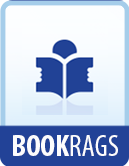The truth is, the man of letters must in some way reconcile himself to the paradox that he is at once the acolyte and the rival of the ancients. Young is optimistic enough to believe that it is possible to surpass them. In the mechanic arts, he complains, men are always attempting to go beyond their predecessors; in the liberal arts, they merely try to follow them. The analogy between the continuous advance of science and a possible continuous advance in literature is perhaps, a misleading one. Professor Gilbert Murray, in Religio Grammatici, bases much of his argument on a denial that such an analogy should be drawn. Literary genius cannot be bequeathed and added to as a scientific discovery can. The modern poet does not stand on Shakespeare’s shoulders as the modern astronomer stands on Galileo’s shoulders. Scientific discovery is progressive. Literary genius, like religious genius, is a miracle less dependent on time. None the less, we may reasonably believe that literature, like science, has ever new worlds to conquer—that, even if AEschylus and Shakespeare cannot be surpassed, names as great as theirs may one day be added to the roll of literary fame. And this will be possible only if men in each generation are determined, in the words of Goldsmith, “bravely to shake off admiration, and, undazzled by the splendour of another’s reputation, to chalk out a path to fame for themselves, and boldly cultivate untried experiment.” Goldsmith wrote these words in The Bee in the same year in which Young’s Conjectures was published. I feel tolerably certain that he wrote them as a result of reading Young’s work. The reaction against traditionalism, however, was gathering general force by this time, and the desire to be original was beginning to oust the desire to copy. Both Young’s and Goldsmith’s essays are exceedingly interesting as anticipations of the romantic movement. Young was a true romantic when he wrote that Nature “brings us into the world all Originals—no two faces, no two




